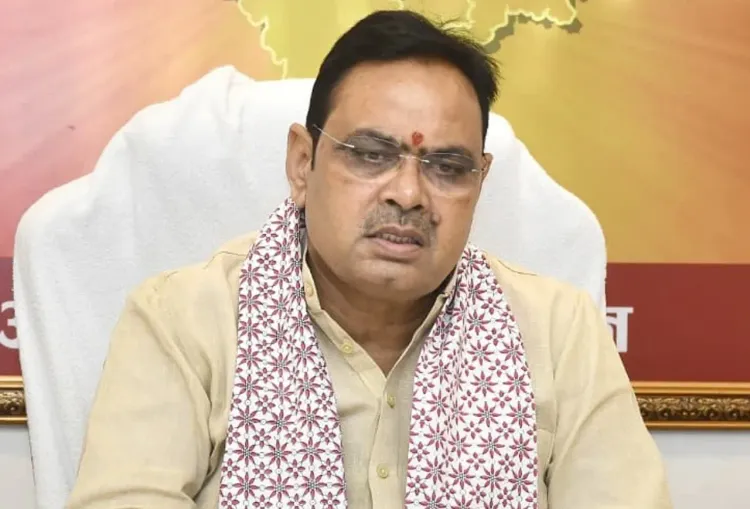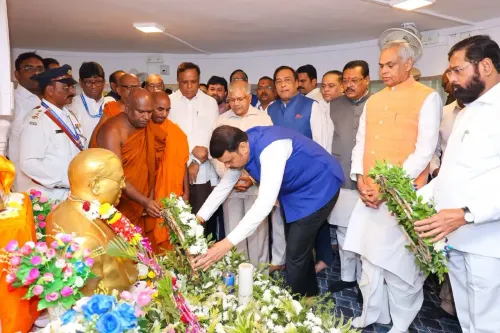Has Rajasthan's Hariyalo Campaign Really Planted Over 10 Crore Saplings in 2025?

Synopsis
Key Takeaways
- Over 10 crore saplings planted in Rajasthan this year.
- Goal of 50 crore saplings in five years.
- Active citizen participation encouraged.
- Plantation efforts span 20 lakh hectares.
- Various departments significantly contributing to the campaign.
Jaipur, 19 Aug (NationPress) Rajasthan has marked a significant achievement under the Hariyalo Rajasthan campaign, surpassing the ambitious goal of planting 10 crore saplings this year.
On Tuesday, Minister of State for Forest and Environment (Independent Charge) Sanjay Sharma met with Chief Minister Bhajan Lal Sharma at his residence to commend him on this remarkable accomplishment.
During this event, the Chief Minister unveiled a campaign poster, while the Forest Minister handed him a sapling.
Inspired by Prime Minister Narendra Modi’s “Ek Ped Maa Ke Naam” initiative, the state government initiated the Hariyalo Rajasthan program under the Chief Minister’s Plantation Mahabhiyan on Hariyali Teej last year.
The administration has set a target of planting 50 crore saplings within five years, ensuring their survival through innovative techniques like geo-tagging and systematic monitoring.
The Chief Minister highlighted that last year's objective of 7 crore saplings was exceeded with 7.5 crore saplings planted, and this year’s target of 10 crore has also been surpassed, recording a total of 10.21 crore saplings so far.
He urged the department to keep encouraging citizens to engage actively, as the ongoing monsoon season still presents opportunities for planting.
Sharma emphasized that this accomplishment mirrors the collective awareness and dedication of the people of Rajasthan towards environmental conservation.
He reiterated that the plantation efforts are not merely symbolic, but a tangible step towards a greener future for generations to come.
The Chief Minister also called upon the public to actively participate in the plantation initiatives under ‘Hariyalo Rajasthan’.
To date, 37.5 lakh saplings have been planted individually and 9.83 crore at the block level, spanning nearly 20 lakh hectares across 274,920 plantation sites.
Numerous departments have significantly contributed to this effort - Education Department (3.25 crore), Rural Development (2.65 crore), Forest Department (2 crore), and Pollution Control Board (50 lakh).










